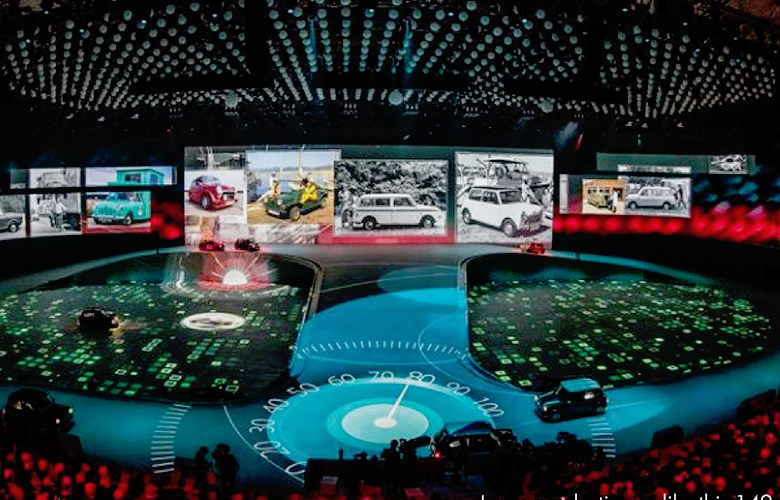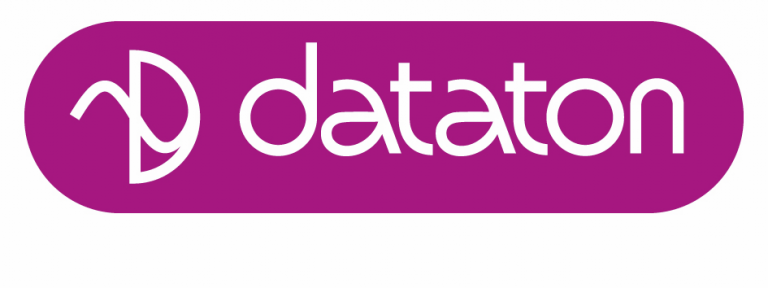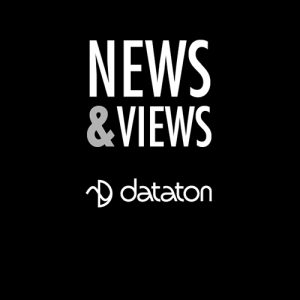
People often ask me what I’m doing when they see me sitting on the left or right of one (or up to three) WATCHOUT operators. “Me? I’m the content manager. Just give me your data and I’ll deal with it,” I usually reply. Judging by the number of blank looks I receive, the concept of content management is not as clear-cut as you might think. Here’s a brief look at what we do, why, and how content management could make your next production even smoother!
The enormous growth of data with exploding resolutions has generated a demand for new content workflows. With the ability to play uncompressed image sequences in Dataton WATCHOUT and the rise of NVME storage, the amount of data has gone from the simple H.264 file we used a couple of years ago, to a few hundred megabytes through HAP and HAP Q which are a little more demanding in terms of data throughput, to uncompressed 4K image sequences which will push the systems up to 1800 MB/s for a single 4K sequence of TGA files. On top of that, we have the possibility to play up to four – or even more – streams of it simultaneously out of one machine.
Some might argue that people don’t see the difference between uncompressed and compressed codecs. After running tests with our clients, I can tell you that they do!
Another major benefit of using uncompressed workflows is that you don’t have to talk about quality of the films anymore. You see what you get. And, if you deal with very high-end products, like sports cars or high tech technologies presented using WATCHOUT, a lot of clients quite simply want the best-of-the-best in terms of image quality.
Most of the major post-production companies work with image sequences; instead of adding a further step that reduces quality, they render their films straight to the final format. Bearing in mind render times, this can save a lot of time and money.
The beautiful thing about image sequences is that you can take out some of the pictures you don’t like and just replace them with your new content. Once all the media is in the servers, you can speed up the whole process: from communication about the possibly defective file, through rendering a new one, to handover and maybe downloading it, to the final upload in WATCHOUT. Seeing as you are only handling the relevant data, you don’t need to replace and render whole movies. That means you are saving on hours of rendering time. If you only need to work and adjust parts of the content, you don’t have to export still frames. They are already there.
Of course, taking the uncompressed image sequence route calls for the right tools – files are huge and the transfer takes a lot of time! Fortunately, as file sizes have increased, the current hardware has also moved on, and, as a professional, you need the right equipment to work in such an environment.
SSDs are getting cheaper and cheaper and the NVME technology makes storage super fast, shifting the bottleneck from slow hard drives to network and CPU. The most modern SSDs like Samsung PM 1725a are connected directly to the CPU via 8x PCIE lanes and can deliver a data rate over 6000 MB/s. Make sure you employ hardware that can handle all the PCIE bandwidth.
In such an environment, 10G Ethernet connectivity should be the absolute minimum and we are even pushing for 40G technologies and faster to speed up the process. With 40G and NVME, together with WIN 10 Pro for Workstations, there is a technology called RDMA. This reduces latency over the network and lets you work with your storage as fast as if it were directly attached to your PC. These technologies used to be extremely expensive and only found in large data centers. As these migrate to even faster connections, 40G networking has become affordable and attractive for the event industry. Bear in mind, too, that even 10G can become a bottleneck very fast when you take into account various Video-Over-IP standards or just a lot of 4K NDI streams.
This leads us to new possibilities in terms of handling the content on big productions. Fully loaded with NVME disks and 40G network, it’s possible for every part of the production, including WATCHOUT show files and content from the production PC, to work on the central storage system without the need to store the files locally. This is nothing new, but the latest NVME and RDMA technologies mean you can work with decent speeds when dealing with image sequences over network. Check out my network diagram example with WATCHOUT and NVME storage.
So do you really need a content manager? In larger productions, the content may be sourced from multiple contributors. That means the bigger the show, the greater the number of potential changes in content. A show operator working on his or her own would quickly become swamped by the constant flow of content changes. A designated content manager acts as a bridge between creators and operators, maintains a clear structure to handle changes smoothly, and ensures that what is shown on screen is not only correct but also in the format most suited for that purpose.
Content managers should not only have a deep understanding about technical topics but also know how to talk with clients about design and the content itself. They might also act as system techs solving problems while operators run the rehearsal, or, on other occasions, take care of their operators like they take care of the data. Sometimes bringing a bottle of water for the operator who can’t leave his seat for hours is as important as controlling the files. Speed up the technologies but don’t forget the people!
With input coming from different sources, how can you still operate without losing track of your changes of the show files and content?
My favorite approach is to use some of the new technologies to speed things up. For example, we sometimes bring in more production PCs referring to the same storage for additional parts of a big trade show concept. The more clients the storage serves, the cheaper it becomes in the end. Life is too short to stare at the progress bar!
Here are a few more words of advice:
• Get all your data on a central server and mount the media via network to your production PC. With 10G or, even better, 40G RDMA network cards, you can easily work from a network volume with low latency.
• Try to connect the content production companies to your central server. It may seem not necessary for small files, but just remember that every time they need to copy files on a USB stick, bring it to the WATCHOUT system and transfer from USB to the production PC, you are losing valuable time. Now think about terabytes of movie sequences and how every step in copying will introduce more latency to your workflow. Besides the faster copy speeds, you save time by skipping unnecessary copy steps. You might have only saved a minute or so for that Photoshop file, but you could save hours of transfer times on bigger shows with this approach.
• I regularly work with Dataton’s WATCHOUT system which is fairly open and simple in terms of the content structure. For example, if you are running four different systems you can access all and work in the same media folder. Just remember to rename your show file for each production PC, eg: Testshow_main, Testshow_backup, Testshow_pre, Testshow_client. Depending on your needs, you can copy and rename the show files to update the shows. Alternatively, you can work independently on different show parts, then copy your files from the timeline to a text file and paste them into another project file. As the files are all in the same folder structure, this works well and is seamless. With simple scripts you can also automate this process very easily.
• Before starting the production always try to create a file name convention for your project. If all files follow the same naming principle it’s easy to keep track of the ever-changing screen content. Example: YYMMDD_Filename_Version. Especially with image sequences, it is a good idea to just rename the folder in order to be able to replace the TIFF files very quickly.
• If you are using multiple systems, use the stage tiers to assign different layers of screens to different IP addresses. That way, it is easy to connect your show file to the specific PC after updates.
• HDD no more. Try to stay away from cheap and slow disks in the workflow and give the same advice to content producers. A small, inexpensive USB hard-drive might not be a problem for the content production but it will slow down the workflow on the show floor and can prove to be a showstopper for rehearsal. Get fast SSDs for the data exchange, too. For super fast speeds get u.2 SSDs that will dock directly to your ingest systems and transfer image sequences with up to 3.500 MB/s.
Using all of these techniques together can speed up your workflow by a factor of 10-15 compared to the USB-stick approach.
Good luck with your next shows and keep pushing the pixels!

Also by News & Views by Dataton :
Projection Design For Theatre: Robert Mallin And “ENRON”


The News&Views blog is created by Dataton, and is about multi-display software and surrounding technologies, media servers, content creation - basically anything within the AV industry that serves to enrich the audience experience! Dataton has provided outstanding products to the audiovisual industry for over 40 years and is the maker of the WATCHOUT production and playback system. WATCHOUT systems are used globally in performing arts venues for scenic projection – in theatre, dance, and musical performances. We first started publishing News&Views, with content reflecting the world of multimedia communication, back in the 80s!
Read Full Profile© 2021 TheatreArtLife. All rights reserved.

Thank you so much for reading, but you have now reached your free article limit for this month.
Our contributors are currently writing more articles for you to enjoy.
To keep reading, all you have to do is become a subscriber and then you can read unlimited articles anytime.
Your investment will help us continue to ignite connections across the globe in live entertainment and build this community for industry professionals.